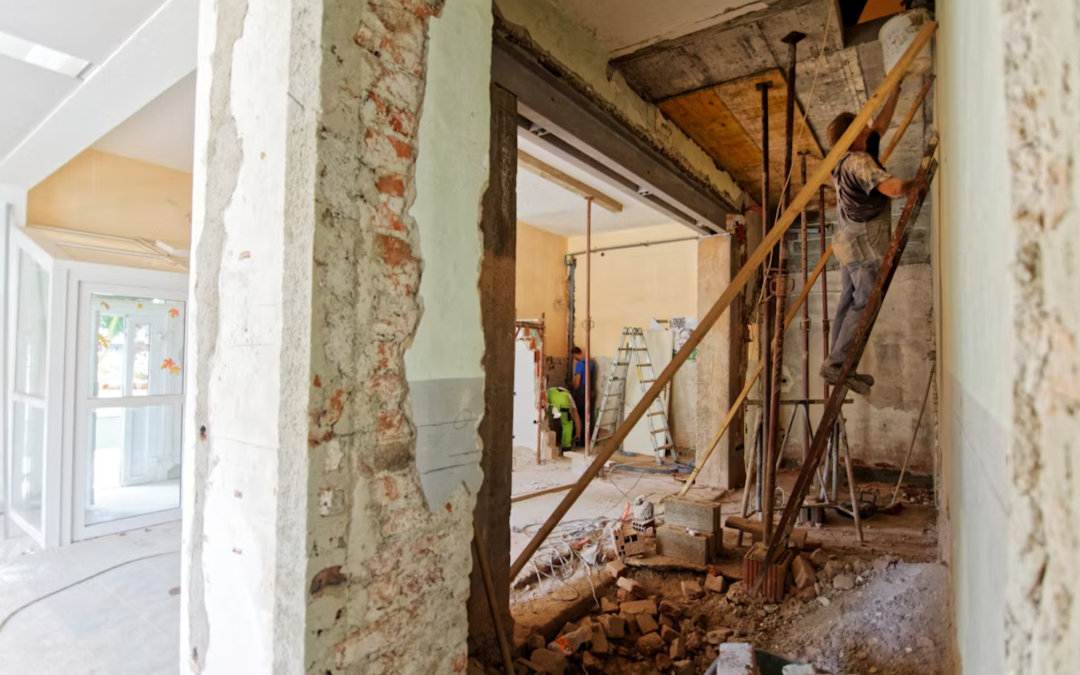How to protect your property—and your wallet—during a remodel
You’ve got the vision. The contractor. The timeline.
But what about the protection plan?
Whether you’re flipping a property, remodeling a kitchen, or undertaking a full-gut renovation, there’s one detail many homeowners and investors overlook until it’s too late: standard homeowners insurance often does not cover construction-related risks.
Here’s what your contractor may not mention—and what you need to know to protect your investment from day one.
1. Standard Homeowners Insurance Doesn’t Cover Work-in-Progress
While your current policy may offer protection for your dwelling, once a major renovation begins, most insurers significantly reduce—or entirely remove—coverage. This is especially common when:
- The property is vacant
- Structural changes are involved
- The project is expected to last several weeks or months
If damage occurs during this period—whether from a fire, theft, storm, or accident—you may find your claim denied. Even worse, you might not realize the gap in coverage until after the loss.
The bottom line: once work begins, your property may no longer be protected under your existing policy.
2. You May Be Liable for Damage—Even If You Hired a Professional
Let’s say a subcontractor makes a mistake that causes water damage or a fire. You might assume that their insurance would cover it. But if the contractor is uninsured, underinsured, or working outside their scope of responsibility, you could be left paying out of pocket.
In addition, many homeowner policies contain strict exclusions for damage related to construction errors or contractor negligence. Without supplemental protection, even a simple oversight could become an expensive legal and financial burden.
3. The Solution: Builder’s Risk and Renovation Coverage
To stay protected during construction, you may need a Builder’s Risk policy or a specific renovation endorsement. These policies are designed to:
- Cover materials, equipment, and labor while work is in progress
- Protect against common risks like fire, theft, vandalism, or weather damage
- Extend coverage to temporary structures, such as scaffolding or storage units
- Clarify who is responsible for what, between you and your contractor
Builder’s Risk insurance is typically short-term and can be customized to your project’s size, scope, and timeline. It fills the gaps your homeowners policy likely leaves open during renovations.
4. Questions to Ask Before the First Hammer Swings
Before construction begins, consider asking the following:
- Is my current insurance policy still valid during renovations?
- Do I need Builder’s Risk or a renovation rider?
- Is my contractor properly insured, licensed, and bonded?
- Who is responsible for materials once they’re delivered to the property?
- What happens if there’s a weather delay, damage, or theft mid-project?
These aren’t small details—they’re key to making sure your investment doesn’t unravel halfway through the job.
Final Thoughts: Plan Beyond the Blueprint
Renovations are exciting. They can increase your property’s value, functionality, and appeal. But they also open the door to unique exposures most people don’t think about until something goes wrong.
The good news? Coverage gaps are avoidable—if you know where to look.
Whether you’re a first-time remodeler or a seasoned real estate investor, a brief conversation with a knowledgeable advisor can help you identify your specific risks and build the right protection strategy for your project.
SouthGroup Insurance is here to make sure your vision is protected—every step of the way.

